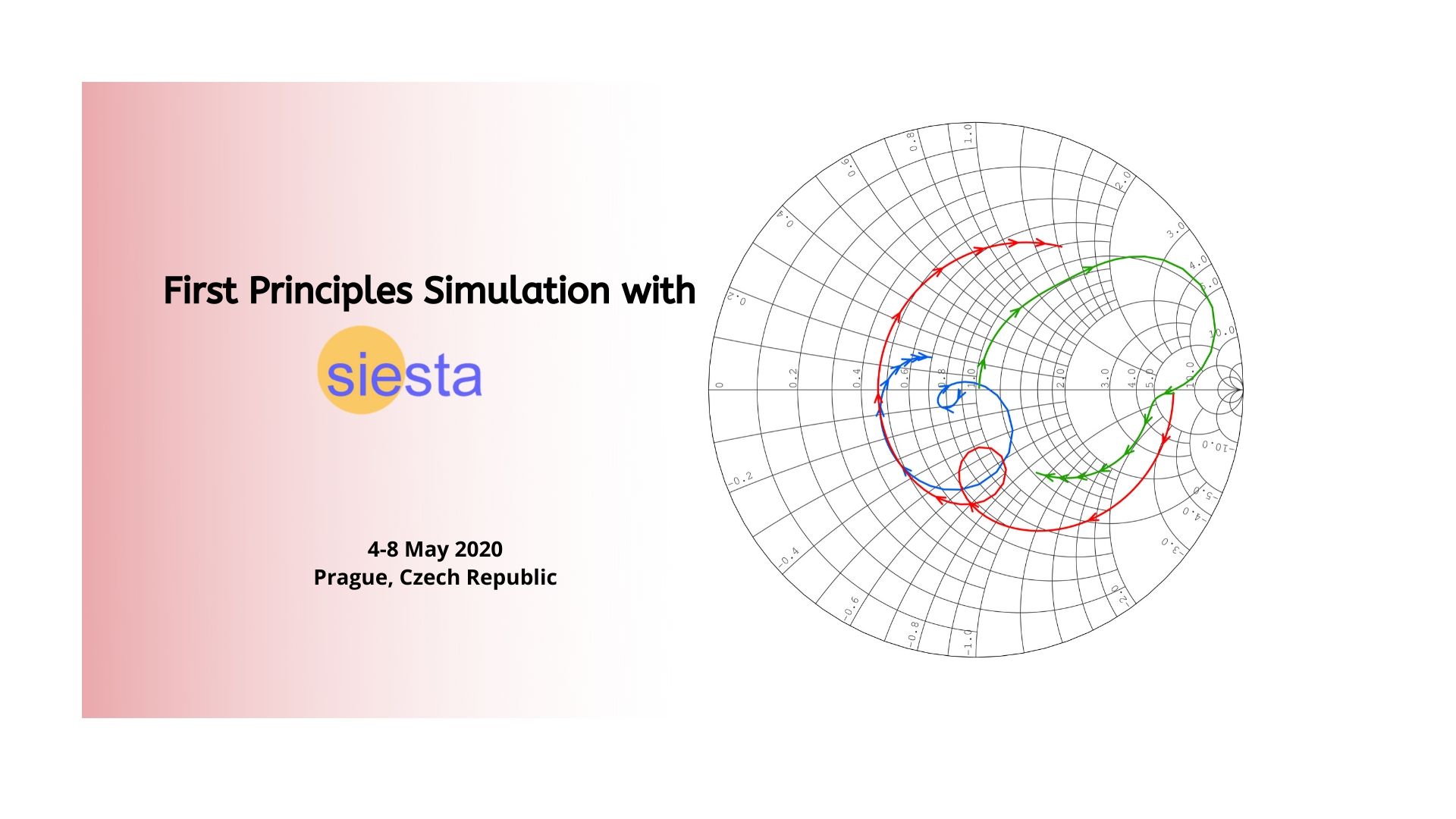
NEWS: The school First-principles simulations of materials with SIESTA, initially scheduled in Prague from May 4 to May 8 2020, has been postponed to a later date. We will keep you abreast once the new date will be confirmed.
-----------------------------------------------------------------------------------------------------------------------------------------------------------------------------------------------------------------------------
The school is aimed at students and researchers from different disciplines in materials science who already use, or plan to use, first-principles techniques to simulate electronic properties of materials. In particular, the school will focus on the use of the SIESTA method [1]. The students will learn its essential theoretical foundations, and to how to use the SIESTA code effectively (parallelization and new, more efficient, solvers). Pre- and post-processing tools will also be presented. Advanced features, such as the computation of quantum transport using the non-equilibrium Green’s function approach will be introduced [2].
We will introduce the students to the use of new solvers, made possible by the recently implemented interface to the ELSI library. In particular: the PEXSI solver has very competitive scalability for low-dimensional systems, and the density-matrix purification solver based on the NTPoly library is a new linear-scaling option.
The students will learn techniques for internal scripting of the operation of the program via an embedded Lua interpreter. These allow the implementation of algorithms at the script level, without recompilation of the code. A library of scripts is already available within the Flos project.
A revamped hands-on material distributed via containers: The MaX project already offers the Quantum Mobile virtual machine with pre-packaged executables for the project’s flagship codes. For the school we would like to build on this experience and offer also a lighter-weight container, prepared with Docker or Singularity or both, to increase the options for deployment on target computers, and including all the actual hands-on material.
More info and application
References
[1] Soler, José M.; Artacho, Emilio; Gale, Julian D; García, Alberto; Junquera, Javier; Ordejón, Pablo; Sánchez-Portal, Daniel, The SIESTA method for ab initio order-N materials simulation, Journal of Physics: Condensed Matter. 14 (11): 2745–2779. (2002)
[2] Papior, N Lorente, T Frederiksen, A García, M Brandbyge Improvements on non-equilibrium and transport Green function techniques: the next-generation transiesta, Computer Physics Communications 212, 8-24 , 51 (2017)

